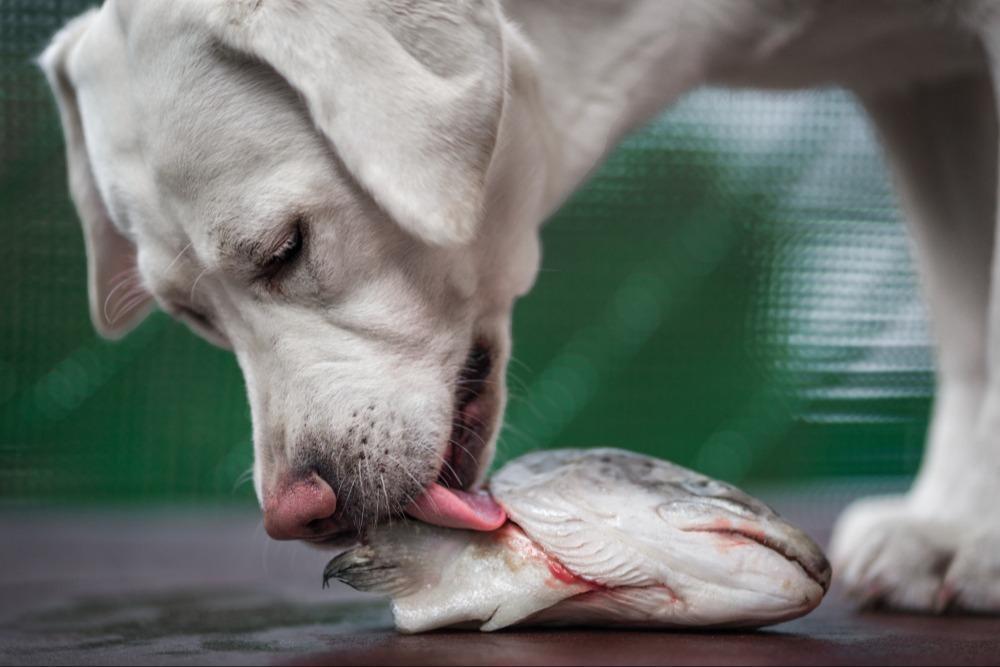-
£19.99

Ticks, and How To Remove Them!
- July 3, 2023
- 7 mins 30 secs
This year, tick infestations seem to be particularly bad. At My Pet Nutritionist, we have had many worried pet owners coming to us, regarding tick prevention, worrying about potential diseases the ticks their dogs are picking up may carry. This guide explains what ticks are, how to identify them, how the severity of tick bites differs depending on your location in the world, what diseases ticks can carry, and how to help prevent tick bites. We will also discuss the dangers of conventional tick treatments, and explain how to safely remove any engorged ticks.
(Did anyone get the ode to Fantastic Beasts, and Where to Find Them?! Ticks are definitely not ‘fantastic’ beasts, however!)
The most common species of tick in the UK are Castor Bean ticks (Ixodes Ricinus), Hedgehog ticks (Ixodes hexagonus), and Dog ticks (Ixodes canisuga), though deer ticks are sometimes picked up.
Paralysis ticks are an example – once engorged, Australian Paralysis ticks (Ixodes holocyclus) and the European Red Sheep tick (Haemaphysalis punctata) release a neurotoxin which causes paralysis in the host.
Another of the more dangerous ticks is the Lone Star tick (Amblyomma Americanum) which can transmit ehrlichiosis in dogs, which can cause internal bleeding, and death. In humans, the Lone Star tick can cause Alpha-gal syndrome, which is a severe allergy to red meat, and products made from mammals.
Thankfully, Lyme Disease in dogs is much less of a worry! Dogs have a great ability to fight the bacteria causing Lyme Disease. In a study of Beagles exposed to Lyme disease, none of the adult dogs showed any symptoms! Puppies naturally have a less developed immune system, so the puppies in the study had around 4 days of mild symptoms, before their immune system fought off the bacteria!
By keeping the immune system strong, we can reduce the risk of symptomatic Lyme Disease in our dogs! Feed fresh, and keep the gut healthy to help keep the immune system strong!
Interesting fact: For transmission of Lyme Disease, a tick has to be engorged (attached to your dog, feeding) for 24-36 hours. If removed safely before this period, the risk of transmission is low.
Findings Here
The cardinal sin in tick removal, is smothering it. Never smother a tick in Vaseline, natural tick prevention, or any other product, and never attempt to burn them off. When you smother a tick, they let go as they are unable to breathe efficiently, however this also causes them to panic. When a tick panics, they regurgitate. Their innards, which could be hosting disease, would be expelled into your dog’s blood stream! If the tick is carrying anything untoward, it would be passed onto your dog!
Now onto the SAFE removal of a tick! There are 4 tools you can use! Let’s take a look at each of these!
Tick Twisters: These are plastic tools, with a forked end. Simply slide the tick between the forks, right by the skin, so the tick’s head is in the tool, and twist it. The twisting action causes the tick to let go.
Tick Keys: These have a large hole, with a very thin opening at the end. Simply hook the tick into the thinnest part of the hole, and pull away from the skin. This pulls the tick from the skin.
Tick Lassos: These are pen-like items, with a retractable wire loop at one end. Hook the wire over the tick, and retract it so the tick cannot move. Gently twist, and pull it away from the skin.
Tweezers: This is probably the least effective method, but perhaps slightly more accessible if you don’t have a tick tool at home yet (it’s a great idea to add one to your dog first aid kit!). Fine pointed tweezers work best. Pinch the tick with the tweezers as close to the skin as possible, and gently lift the tick away. Be sure to remove the head!
Once removed, spray the area with Leucillin, or similar natural antiseptic spray.
Internal products often include herbs such as neem leaf, peppermint leaf, yucca, ginger, fenugreek, lemon balm, and garlic. These all make the dog unattractive to ticks. Fresh garlic is a great internal preventative, in the correct amounts for your size of dog. Do not give garlic to Japanese breeds, young puppies, or those suffering with blood disorders.
Natural external products often include neem, geraniol, rosemary, lavender, ginger, peppermint, and lemongrass. It’s important not to use products containing rosemary or geraniol on dogs with a history of seizures.
Essential oils of high quality, can also be very effective against ticks, however it’s important these are not used on pets in contact with cats as cats are extremely sensitive to most essential oils. Essential oils proven to be effective against ticks include Basil, Bergamot, lavender, thyme and marjoram.
Findings Here
Some brands offer 100% natural essential oil infused collars, but there are other options too when it comes to collars! Baltic Amber collars may help repel ticks due to the energies surrounding it. Electromagnetic (EM) collars and tags work in a similar way; ticks don’t like the electromagnetic energy, so will be repelled.
Spot-on treatments: these absorb through the skin and into the bloodstream, where the powerful neurotoxins spread to all other organs in the body. Side affects most commonly seen with these are seizures, ataxia, dermatitis, and chemical burns.
Flea and tick collars: chemical flea and tick collars usually last around 9 months. They are infused with slow release neurotoxins which absorb through the skin and into the bloodstream, with similar side affects to spot-on treatments.
Oral treatments: these products come with official FDA warnings for seizures, ataxia, dermatitis, and even death. They appear to attack the kidneys too.
For more information on chemical treatments, read our blog here!
We hope this guide has helped you understand those pesky little ticks a but more, and perhaps put your mind at ease. Pets get ticks – it happens! Try not to panic! If you’re interested in switching to a safer, more natural lifestyle for your pets, please don’t hesitate to book in with one of our team!
Team MPN x
(Did anyone get the ode to Fantastic Beasts, and Where to Find Them?! Ticks are definitely not ‘fantastic’ beasts, however!)
How to Identify a Tick
Ticks are often mistaken for skin tags… or those latched on the stomach area, often mistaken for nipples! Ticks have very small heads, and large, shiny, rounded bodies. They have 8 legs, which protrude from around the head area. Ticks can be a variety of colours, from peachy-nude, to red, to dark brown, grey and black. They can be seen crawling across your pet’s fur, or engorged, in which case, only the large rounded body will be visible, with the legs also visible right next to the skin. We will talk about tick removal later in this article.Ticks in the UK
In the UK, our tick population doesn’t tend to carry diseases which are deadly to healthy dogs, unlike other countries which have ticks carrying more severe diseases. We have around 20 species of tick in the UK.The most common species of tick in the UK are Castor Bean ticks (Ixodes Ricinus), Hedgehog ticks (Ixodes hexagonus), and Dog ticks (Ixodes canisuga), though deer ticks are sometimes picked up.
Ticks in the Rest of the World
Ticks in countries outside of the UK can be much more dangerous than those in the UK, to both humans and dogs.Paralysis ticks are an example – once engorged, Australian Paralysis ticks (Ixodes holocyclus) and the European Red Sheep tick (Haemaphysalis punctata) release a neurotoxin which causes paralysis in the host.
Another of the more dangerous ticks is the Lone Star tick (Amblyomma Americanum) which can transmit ehrlichiosis in dogs, which can cause internal bleeding, and death. In humans, the Lone Star tick can cause Alpha-gal syndrome, which is a severe allergy to red meat, and products made from mammals.
But What About Lyme Disease?
Often carried by Deer Ticks, Lyme disease is the most common potential disease transmitted from ticks. In humans, Lyme Disease is a very debilitating condition, and has a huge affect on one’s quality of life. Humans affected, will likely be on very long courses, or even lifelong medication.Thankfully, Lyme Disease in dogs is much less of a worry! Dogs have a great ability to fight the bacteria causing Lyme Disease. In a study of Beagles exposed to Lyme disease, none of the adult dogs showed any symptoms! Puppies naturally have a less developed immune system, so the puppies in the study had around 4 days of mild symptoms, before their immune system fought off the bacteria!
By keeping the immune system strong, we can reduce the risk of symptomatic Lyme Disease in our dogs! Feed fresh, and keep the gut healthy to help keep the immune system strong!
Interesting fact: For transmission of Lyme Disease, a tick has to be engorged (attached to your dog, feeding) for 24-36 hours. If removed safely before this period, the risk of transmission is low.
Findings Here
How To Safely Remove a Tick
First we’ll explain how NOT to remove a tick, as this is incredibly important to minimise the risk of disease transmission, and is a common mistake made by pet owners.The cardinal sin in tick removal, is smothering it. Never smother a tick in Vaseline, natural tick prevention, or any other product, and never attempt to burn them off. When you smother a tick, they let go as they are unable to breathe efficiently, however this also causes them to panic. When a tick panics, they regurgitate. Their innards, which could be hosting disease, would be expelled into your dog’s blood stream! If the tick is carrying anything untoward, it would be passed onto your dog!
Now onto the SAFE removal of a tick! There are 4 tools you can use! Let’s take a look at each of these!
Tick Twisters: These are plastic tools, with a forked end. Simply slide the tick between the forks, right by the skin, so the tick’s head is in the tool, and twist it. The twisting action causes the tick to let go.
Tick Keys: These have a large hole, with a very thin opening at the end. Simply hook the tick into the thinnest part of the hole, and pull away from the skin. This pulls the tick from the skin.
Tick Lassos: These are pen-like items, with a retractable wire loop at one end. Hook the wire over the tick, and retract it so the tick cannot move. Gently twist, and pull it away from the skin.
Tweezers: This is probably the least effective method, but perhaps slightly more accessible if you don’t have a tick tool at home yet (it’s a great idea to add one to your dog first aid kit!). Fine pointed tweezers work best. Pinch the tick with the tweezers as close to the skin as possible, and gently lift the tick away. Be sure to remove the head!
Once removed, spray the area with Leucillin, or similar natural antiseptic spray.
How to Prevent Ticks
There are a number of natural tick prevention methods available. A layered approach is best; an internal product, an external product, and perhaps a repelling collar.Internal products often include herbs such as neem leaf, peppermint leaf, yucca, ginger, fenugreek, lemon balm, and garlic. These all make the dog unattractive to ticks. Fresh garlic is a great internal preventative, in the correct amounts for your size of dog. Do not give garlic to Japanese breeds, young puppies, or those suffering with blood disorders.
Natural external products often include neem, geraniol, rosemary, lavender, ginger, peppermint, and lemongrass. It’s important not to use products containing rosemary or geraniol on dogs with a history of seizures.
Essential oils of high quality, can also be very effective against ticks, however it’s important these are not used on pets in contact with cats as cats are extremely sensitive to most essential oils. Essential oils proven to be effective against ticks include Basil, Bergamot, lavender, thyme and marjoram.
Findings Here
Some brands offer 100% natural essential oil infused collars, but there are other options too when it comes to collars! Baltic Amber collars may help repel ticks due to the energies surrounding it. Electromagnetic (EM) collars and tags work in a similar way; ticks don’t like the electromagnetic energy, so will be repelled.
Dangers of Chemical Tick Treatments
We would not recommend using chemical pest treatment or preventatives. These can be spot on, collar or oral form. It’s also important to understand that these products DO NOT prevent ticks!! The tick had to engorge to ingest the poison circulating in the bloodstream of the dog, before dying and falling off.Spot-on treatments: these absorb through the skin and into the bloodstream, where the powerful neurotoxins spread to all other organs in the body. Side affects most commonly seen with these are seizures, ataxia, dermatitis, and chemical burns.
Flea and tick collars: chemical flea and tick collars usually last around 9 months. They are infused with slow release neurotoxins which absorb through the skin and into the bloodstream, with similar side affects to spot-on treatments.
Oral treatments: these products come with official FDA warnings for seizures, ataxia, dermatitis, and even death. They appear to attack the kidneys too.
For more information on chemical treatments, read our blog here!
We hope this guide has helped you understand those pesky little ticks a but more, and perhaps put your mind at ease. Pets get ticks – it happens! Try not to panic! If you’re interested in switching to a safer, more natural lifestyle for your pets, please don’t hesitate to book in with one of our team!
Team MPN x
Customer Reviews
Explore related products
Related articles

Disease ManagementGeneral Health
Do Indoor Cats Have Different Needs to Outdoor Cats?
Jul 05 2024
•
7 mins 50 secs

Disease ManagementGeneral Health
How To Support Your Dog’s Brain Health
Jun 27 2024
•
11 mins 55 secs

Disease ManagementGeneral Health
5 Reasons Why Your Dog May Have Diarrhoea
Jun 20 2024
•
5 mins 55 secs

Disease ManagementGeneral Health
Understanding Pet Food Labels
Jun 13 2024
•
8 mins 40 secs

Disease ManagementGeneral Health
Pooh Guide for Dogs: What’s Good, and What’s Not
May 16 2024
•
9 mins 15 secs

Disease ManagementGeneral Health
How to Choose the Best Omega Oil for Pets
May 03 2024
•
12 mins 45 secs

Disease ManagementGeneral Health
How to Avoid Environmental Hazardous Exposure in Pets – Part 2
Apr 25 2024
•
16 mins

Disease ManagementGeneral Health
How To Avoid Environmental Hazardous Exposure in Pets – Part 1
Apr 19 2024
•
9 mins 40 secs

Disease ManagementGeneral Health
The Ins and Outs of Salmon Oil
Feb 29 2024
•
7 mins 40 secs

Disease ManagementGeneral Health
The Ultimate Guide on Parasites: Part 2 – Internal Parasites
Feb 17 2024
•
16 mins
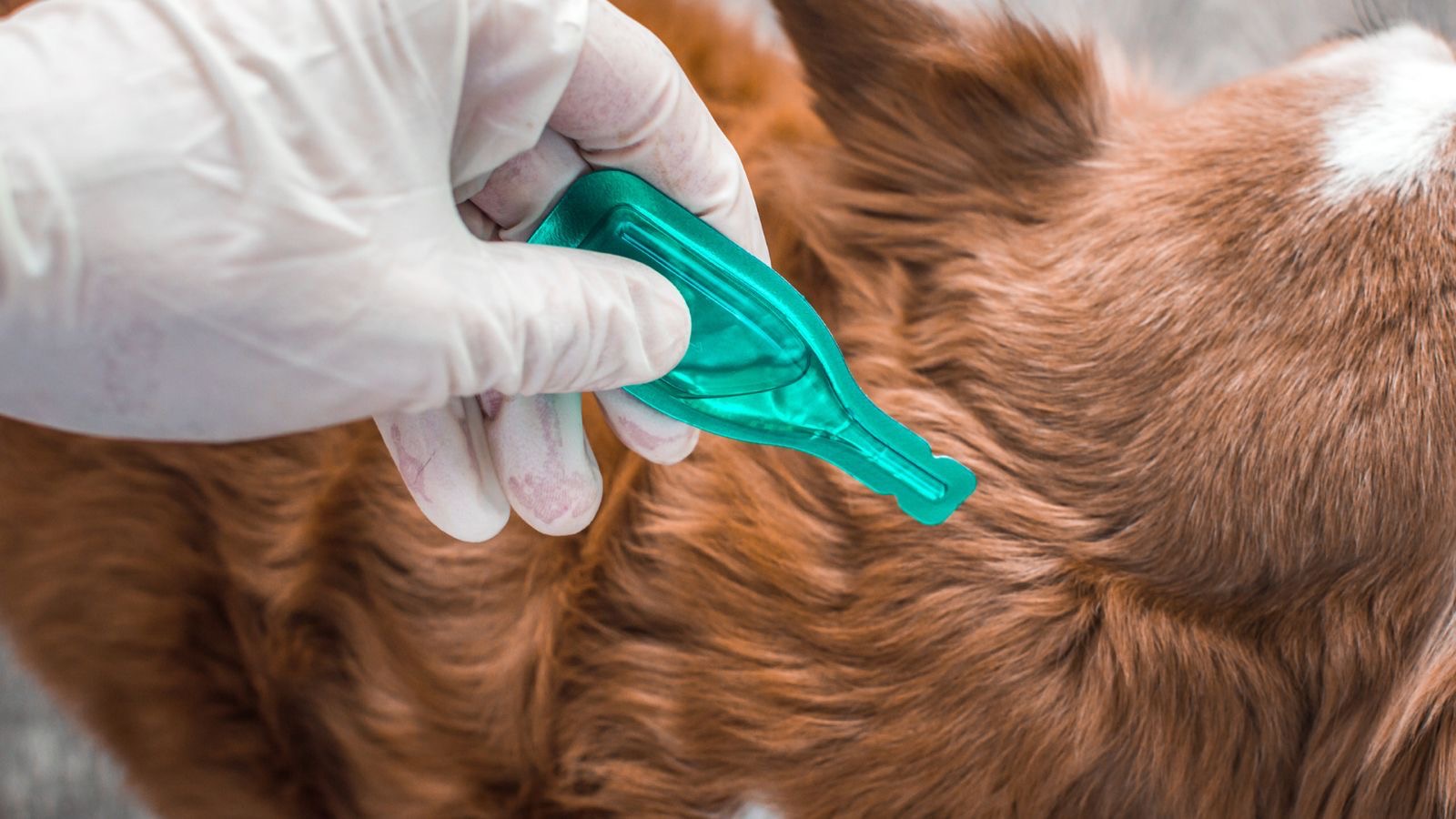
Disease ManagementGeneral Health
The Ultimate Guide on Parasites – Part 1: External Parasites
Feb 16 2024
•
11 mins 40 secs

Disease ManagementGeneral Health
The Skinny on Blueberries for Dogs
Jan 31 2024
•
7 mins 46 secs

Disease ManagementGeneral Health
Should I Feed my Itchy Dog a Cool Protein?
Jan 18 2024
•
4 mins 40 secs

Disease ManagementGeneral Health
What Should I Feed My Cat or Dog?
Jan 11 2024
•
8 mins 40 secs

Disease ManagementGeneral Health
The Low Down on Spondylosis in Dogs
Dec 14 2023
•
12 mins 40 secs

Disease ManagementGeneral Health
How To Strengthen My Dog’s Immune System
Dec 07 2023
•
9 mins 15 secs

Disease ManagementGeneral Health
Can Stress Cause My Pet’s Disease?
Nov 23 2023
•
10 mins 30 secs

Disease ManagementGeneral Health
Can Diet Cause Raised Liver Enzymes?
Nov 16 2023
•
6 mins 20 secs

Disease ManagementGeneral Health
What to Feed a Dog When Regurgitating
Sep 21 2023
•
4 mins 45 secs
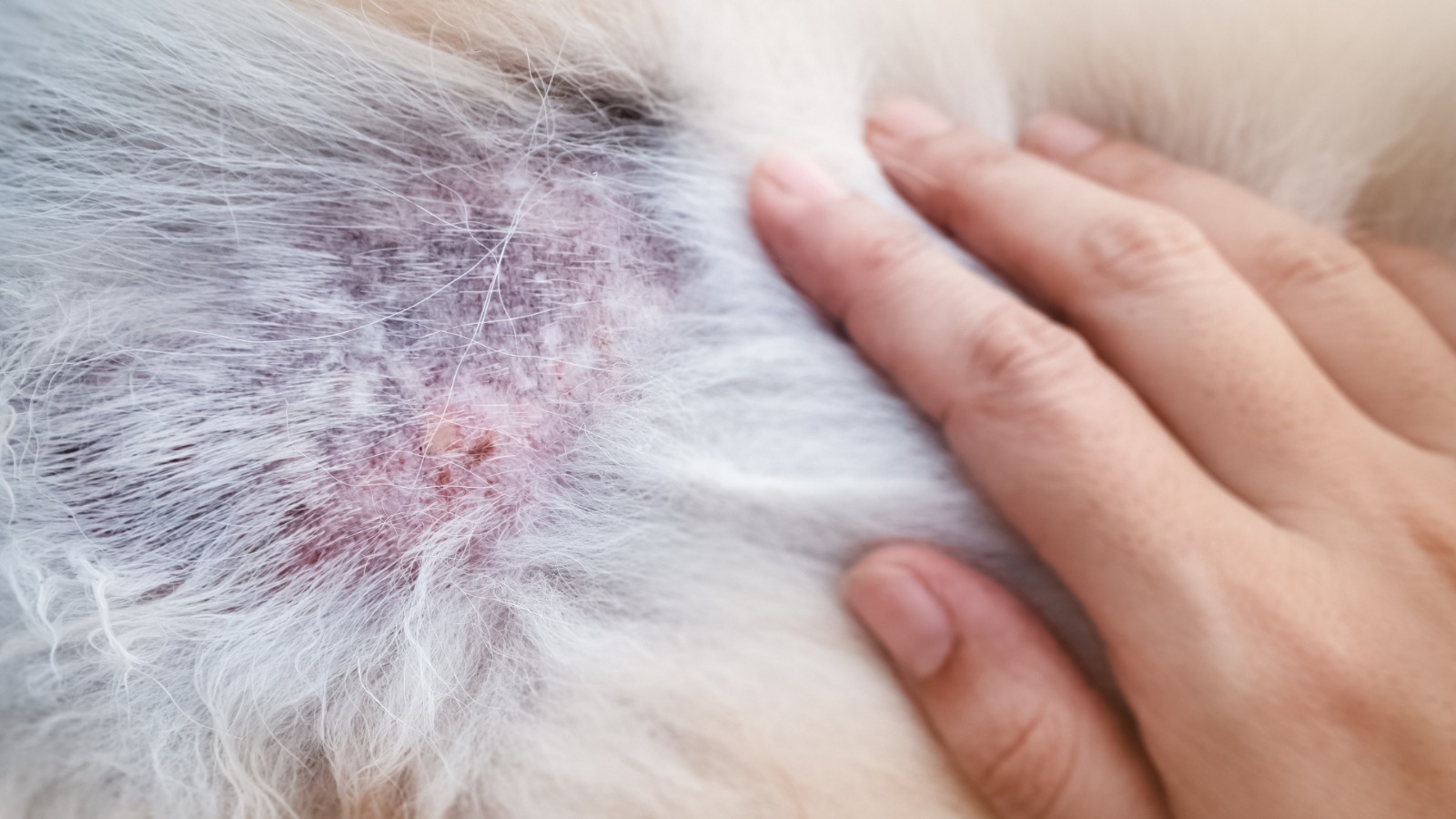
Disease ManagementGeneral Health
Hotspots: What’s Causing Them, and How To Help
Sep 14 2023
•
6 mins 20 secs

Disease ManagementGeneral Health
Is Coconut Oil Good, or Bad for My Dog?
Aug 31 2023
•
4 mins 40 secs

Disease ManagementGeneral Health
Raw Feeding: How to Balance an 80:10:10
Jul 21 2023
•
5 mins 10 secs

Disease ManagementGeneral Health
Oxalate Stones – What You Need to Know
Jul 13 2023
•
2 mins 40 secs
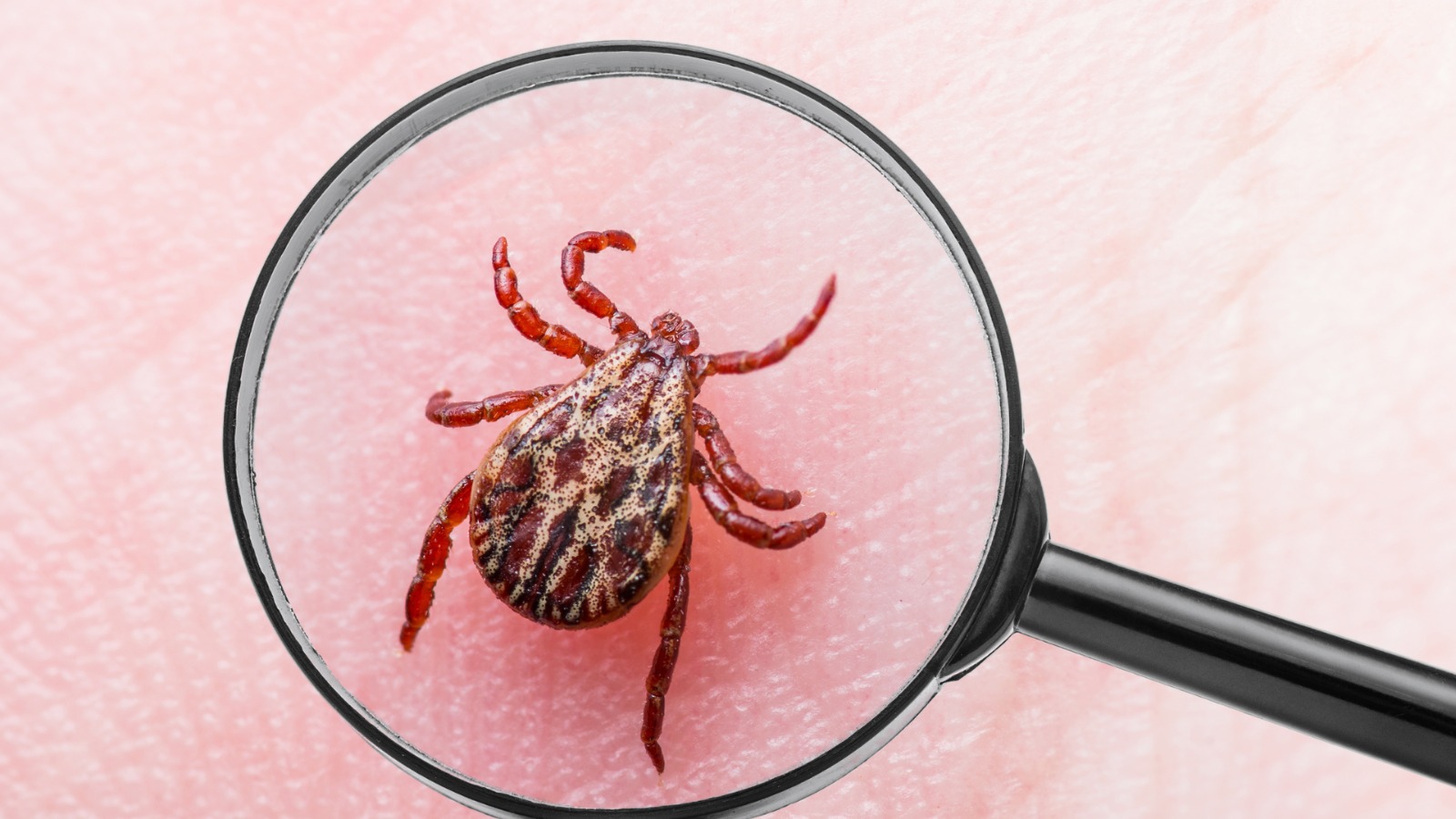
Disease ManagementGeneral Health
Ticks, and How To Remove Them!
Jul 03 2023
•
7 mins 30 secs
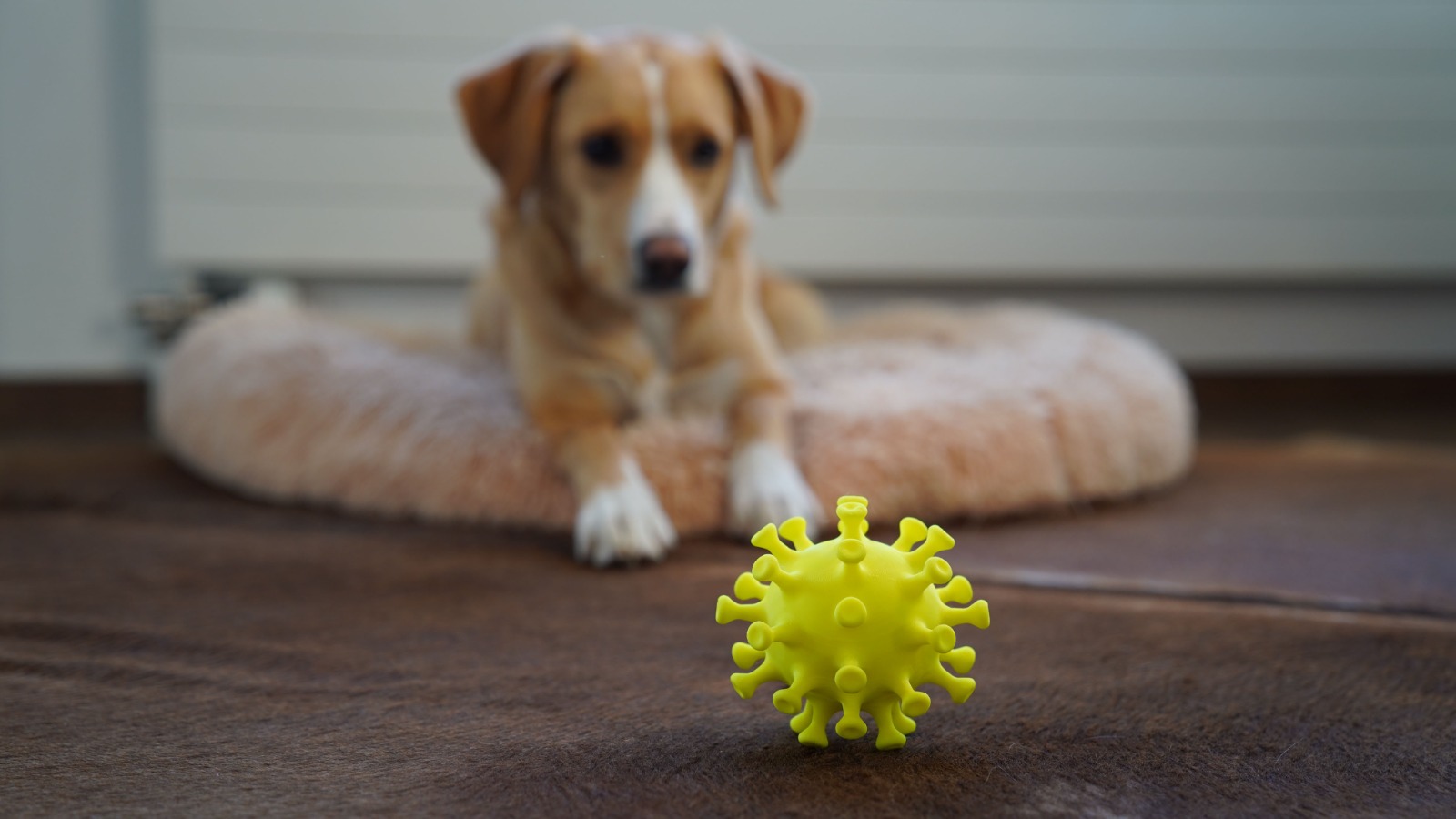
Disease ManagementGeneral Health
5 Cornerstones of Immunity for your Pet
Jun 15 2023
•
6 mins

Disease ManagementGeneral Health
Cysteine Stones … Everything You Need to Know
Jun 01 2023
•
3 mins 50 secs

Disease ManagementGeneral Health
Everything you Need to Know About Cushing’s Disease
May 12 2023
•
8 mins 40 secs

Disease ManagementGeneral Health
5 Signs My Dog is Deficient in Vitamin D
Apr 27 2023
•
3 mins 20 secs

Disease ManagementGeneral Health
Hormones, and Their Role in the Body
Apr 20 2023
•
7 mins 12 secs

Disease ManagementGeneral Health
5 Benefits of Vitamin C for Your Dog
Mar 18 2023
•
4 mins 42 secs

Disease ManagementGeneral Health
The Lowdown on Dilated Cardiomyopathy
Mar 08 2023
•
5 mins

Disease ManagementGeneral Health
The Link Between Leaky Gut and Arthritis
Jan 31 2023
•
9 mins 40 secs

Disease ManagementGeneral Health
Top Tips for Keeping Your Dog’s Teeth Clean!
Jan 30 2023
•
9 mins 30 secs

Disease ManagementGeneral Health
The Connection Between Leaky Gut and Autoimmunity – Part 1
Jan 18 2023
•
4 mins

Disease ManagementGeneral Health
11 Signs Your Pet Has Low Stomach Acid
Jan 04 2023
•
6 mins 30 secs

Disease ManagementGeneral Health
The Importance of Iodine for Dogs
Dec 28 2022
•
3 mins 40 secs

Disease ManagementGeneral Health
The Ultimate Guide to Knuckling in Dogs
Dec 15 2022
•
8 mins

Disease ManagementGeneral Health
Why Does My Dog Urinate So Much?
Dec 08 2022
•
5 mins 30 secs

Disease ManagementGeneral Health
Why Does My Dog Drink So Much Water?
Nov 29 2022
•
5 mins 30 secs

Disease ManagementGeneral Health
Top 10 Tips to Reduce Anxiety During Fireworks Season
Nov 04 2022
•
4 mins

Disease ManagementGeneral Health
How Can I Use Food To Support My Anxious Dog?
Nov 01 2022
•
3 mins 40 secs

Disease ManagementGeneral Health
How To Choose Safe and Sustainable Pet Products
Sep 26 2022
•
3 mins 30 secs

Disease ManagementGeneral Health
5 Easy Cleaning Solutions For Pet Owners
Sep 26 2022
•
4 mins

Disease ManagementGeneral Health
Does My Pet’s Skin Have Its Own HPA Axis?
Sep 12 2022
•
6 mins

Disease ManagementGeneral Health
6 Things All Pet Owners Should Have In Their Cupboards
Sep 12 2022
•
5 mins 40 secs

Disease ManagementGeneral Health
5 Things To Include In The Senior Dog’s Bowl
Sep 05 2022
•
4 mins 30 secs

Disease ManagementGeneral Health
How Does My Dog Manage Toxin Exposure?
Aug 30 2022
•
4 mins 30 secs

Disease ManagementGeneral Health
How Does The Gut Influence My Pet’s Immune Health
Aug 23 2022
•
4 mins

Disease ManagementGeneral Health
Support Your Pet’s Gut Health with the 4 R’s
Aug 22 2022
•
4 mins

Disease ManagementGeneral Health
How to Enrich Your Cat’s Life
Aug 08 2022
•
5 mins 30 secs

Disease ManagementGeneral Health
8 Reasons For Your Dog’s Licking Behaviour
Aug 02 2022
•
7 mins 20 secs

Disease ManagementGeneral Health
Things To Think About: Skin Health in Dogs
Aug 01 2022
•
7 mins 30 secs

Disease ManagementGeneral Health
Why Sleep Is So Important For Puppies
Jul 25 2022
•
10 mins 40 secs

Disease ManagementGeneral Health
Should I Vaccinate My Dog Against Kennel Cough?
Jul 11 2022
•
4 mins 59 secs

Disease ManagementGeneral Health
Supporting Wound Healing in Dogs
Jul 04 2022
•
4 mins 58 secs

Disease ManagementGeneral Health
Nutrients for Skin Health in Dogs
Jul 04 2022
•
3 mins 29 secs

Disease ManagementGeneral Health
The Top Five Water Hazards For Dogs
Jun 27 2022
•
3 mins 13 secs

Disease ManagementGeneral Health
4 Times You Don’t Want To Feed Veg To Your Dog
Jun 21 2022
•
3 mins 58 secs

Disease ManagementGeneral Health
How To Support My Dog’s Liver Shunt
Jun 20 2022
•
4 mins 46 secs

Disease ManagementGeneral Health
Could My Dog’s Coat Type Contribute to Skin Issues?
Jun 16 2022
•
7 mins

Disease ManagementGeneral Health
Help! My Dog’s Ears Are Itchy!
Jun 14 2022
•
3 mins 38 secs

Disease ManagementGeneral Health
How Do Pain Medications Work In Pets?
Jun 08 2022
•
5 mins 54 secs

Disease ManagementGeneral Health
The Neuroscience of Pain In Pets
Jun 07 2022
•
5 mins 32 secs

Disease ManagementGeneral Health
How Can We Support the Stressed Cat?
Jun 02 2022
•
6 mins 35 secs

Disease ManagementGeneral Health
A Systems Approach to Digestive Health in Pets
May 31 2022
•
5 mins 44 secs

Disease ManagementGeneral Health
3 Tips to Support Your Pet’s Urinary Health
May 26 2022
•
4 mins 46 secs

Disease ManagementGeneral Health
What Does the Microbiome Have to Do With My Dog’s Bladder Stones?
May 24 2022
•
6 mins 39 secs

Disease ManagementGeneral Health
Does the Breed of My Dog Influence their Test Results?
May 19 2022
•
2 mins 56 secs

Disease ManagementGeneral Health
The Nutritional Needs of the Senior Dog
May 12 2022
•
5 mins 26 sec

Disease ManagementGeneral Health
Supporting The Senior Dog’s Cognitive Function
May 05 2022
•
5 mins 58 secs

Disease ManagementGeneral Health
Why Do Allergies in Dogs Develop?
Apr 21 2022
•
5 mins 36 secs

Disease ManagementGeneral Health
4 Tips to Support Your Dog with IBS
Apr 19 2022
•
3 mins 45 secs

Disease ManagementGeneral Health
Using Nutrition to Support The Stressed Dog
Apr 13 2022
•
8 mins 11 secs

Disease ManagementGeneral Health
4 Nutrients For The Fussy Eating Dog
Apr 11 2022
•
3 mins 58 secs

Disease ManagementGeneral Health
5 Nutrients for Eye Health in Dogs
Apr 04 2022
•
4 mins 33 secs

Disease ManagementGeneral Health
Does My Dog Have a Gut-Brain Axis?
Mar 28 2022
•
6 mins 7 secs

Disease ManagementGeneral Health
5 Nutrients To Support Your Anxious Dog
Mar 28 2022
•
3 mins

Disease ManagementGeneral Health
7 Foods That Add Fibre To Your Dog’s Diet
Mar 21 2022
•
5 mins 2 secs

Disease ManagementGeneral Health
3 Top Tips For Anal Gland Health in Dogs
Mar 21 2022
•
4 mins 23 secs

Disease ManagementGeneral Health
What Are Phytochemicals and Does My Dog Need Them?
Mar 14 2022
•
4 mins 46 secs

Disease ManagementGeneral Health
Nutrition for the Recovering Dog
Mar 14 2022
•
5 mins 18 secs

Disease ManagementGeneral Health
What is Addison’s Disease in Dogs?
Mar 07 2022
•
2 mins 40 secs

Disease ManagementGeneral Health
A Brief Guide to Our Pet’s Pancreas
Mar 07 2022
•
6 mins 24 secs

Disease ManagementGeneral Health
A Guide to Inflammation in Pets
Feb 28 2022
•
4 mins 8 secs

Disease ManagementGeneral Health
Do We Need to Boost Our Pet’s Immune System?
Feb 15 2022
•
4 mins 42 secs

Disease ManagementGeneral Health
Does My Dog Have A Gut-Skin Axis?
Feb 14 2022
•
4 mins 48 secs

Disease ManagementGeneral Health
5 Wonderful Herbs for Dog Joint Care
Feb 07 2022
•
5 mins 3 secs

Disease ManagementGeneral Health
What is Cat Acne? Our Top Tips to Tackle It
Jan 31 2022
•
5 mins 54 secs

Disease ManagementGeneral Health
How Can I Help My Cat Lose Weight?
Jan 31 2022
•
4 mins 30 secs

Disease ManagementGeneral Health
Why Does My Dog Need Vitamins? Part Two – The Water-Soluble Vitamins
Jan 24 2022
•
6 mins 42 secs

Disease ManagementGeneral Health
Why Does My Dog Need Vitamins? Part One – The Fat-Soluble Vitamins
Jan 24 2022
•
5 mins 51 secs

Disease ManagementGeneral Health
4 Superfoods for Liver Health in Dogs
Jan 19 2022
•
4 mins 15 secs

Disease ManagementGeneral Health
5 Superfoods for Joint Health in Dogs
Jan 12 2022
•
4 mins 52 secs

Disease ManagementGeneral Health
Nutrients for Bone and Joint Health in Pets
Jan 10 2022
•
5 mins 3 secs

Disease ManagementGeneral Health
4 Air Purifying Plants That Are Safe for Pets
Jan 05 2022
•
3 mins 40 secs

Christmas Calm: Our Top Nutritional Tips to Support Your Canine
Dec 22 2021
•
2 mins 43 secs

Disease ManagementGeneral Health
3 Pillars for Pet Guardian Health This Winter
Dec 13 2021
•
6 mins 12 secs

Disease ManagementGeneral Health
Feeding Bones: A Mini Guide To Bones
Dec 07 2021
•
5 mins 56 secs

Disease ManagementGeneral Health
The Importance of Iron in Pet Health
Nov 23 2021
•
5 mins 10 secs

Disease ManagementGeneral Health
Can Cats Improve Our Health?
Nov 16 2021
•
5 minutes 52 secs

Disease ManagementGeneral Health
Should I Feed My Pet a Vegan Diet?
Nov 09 2021
•
5 mins 6 secs

Disease ManagementGeneral Health
What Can I Do For My Dog’s Bladder Stones
Nov 04 2021
•
4 mins 56 secs

Disease ManagementGeneral Health
5 Mistakes Dog Owners Often Make
Nov 01 2021
•
5 mins 9 secs

Disease ManagementGeneral Health
Our Top Nutrients for General Kidney Health
Oct 06 2021
•
5 mins 56 secs

Disease ManagementGeneral Health
A Brief Guide to The Canine Urinary System
Oct 06 2021
•
5 mins 6 secs

Disease ManagementGeneral Health
Why Does My Dog Need Minerals – Part Two
Sep 23 2021
•
12 min read

Disease ManagementGeneral Health
Why Does My Dog Need Minerals – Part One
Sep 22 2021
•
7 min read

Disease ManagementGeneral Health
Top Tips to Help Your Dog Lose Weight
Sep 16 2021
•
5 min read

Disease ManagementGeneral Health
Are We Really That Good At Doing It Ourselves?
Sep 09 2021
•
10 min read

Disease ManagementGeneral Health
To Fast Or Not To Fast? That Is The Question
Aug 23 2021
•
5 min read

Disease ManagementGeneral Health
Dog Allergies – The Hypoallergenic Myth
Aug 11 2021
•
5 min read

Disease ManagementGeneral Health
Can Nutrition Support Joint Health?
Aug 10 2021
•
9 min read

Disease ManagementGeneral Health
My Pet Eats Grass, Should I be Worried?
Jul 27 2021
•
5 min read

Disease ManagementGeneral Health
Can Stress Affect My Dog’s Digestive System?
Jul 26 2021
•
8 min read

Disease ManagementGeneral Health
Parasites and What You Really Need to Know
May 17 2021
•
9 min read

Disease ManagementGeneral Health
The Importance of Nature for Human and Dog Health
May 12 2021
•
5 min read

Disease ManagementGeneral Health
How Food Affects Your Dog’s Behaviour
Apr 22 2021
•
10 min read

Disease ManagementGeneral Health
How Nutrition Affects Your Pet’s Genes
Apr 19 2021
•
15 min read

Disease ManagementGeneral Health
The Struggle of the Cat in our Toxic World
Mar 09 2021
•
8 min read
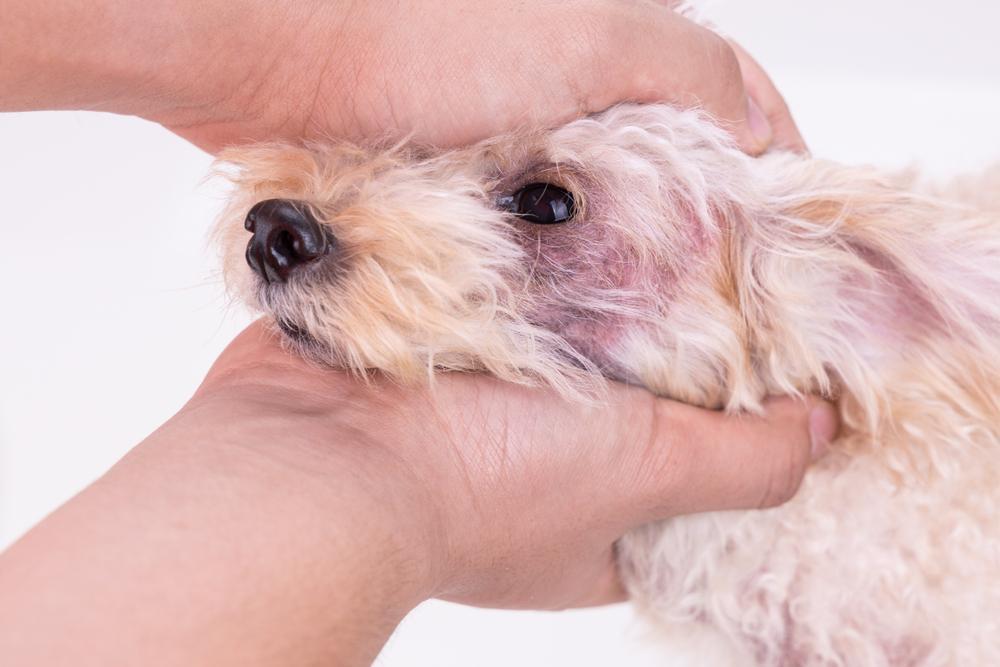
Disease ManagementGeneral Health
Can Genes Result in Poor Skin Function?
Mar 03 2021
•
8 min read

Disease ManagementGeneral Health
Facts on the Leptosporosis Vaccine
Feb 01 2021
•
6 min read

Disease ManagementGeneral Health
Dogs in pain – what is it and how to look for it?
Jan 28 2021
•
8 min read

Disease ManagementGeneral Health
Fresh Food to Add to Your Dog’s Bowl
Jan 26 2021
•
6 min read

Disease ManagementGeneral Health
5 Top Tips for Dealing with a Fussy Eater
Jan 18 2021
•
6 mins 57 secs

Disease ManagementGeneral Health
What is the best kind of pet food?
Jan 14 2021
•
11 min read

Disease ManagementGeneral Health
5 Reasons Why Your Dog May Have Diarrhoea
Jan 07 2021
•
6 min read

Disease ManagementGeneral Health
Is Your Toxic Home Affecting Your Pet
Dec 28 2020
•
8 min read

Disease ManagementGeneral Health
How Much Sleep Should My Dog Get?
Dec 15 2020
•
12 min read

Disease ManagementGeneral Health
5 Reasons Your Dog May Have Bad Breath
Nov 30 2020
•
7 min read
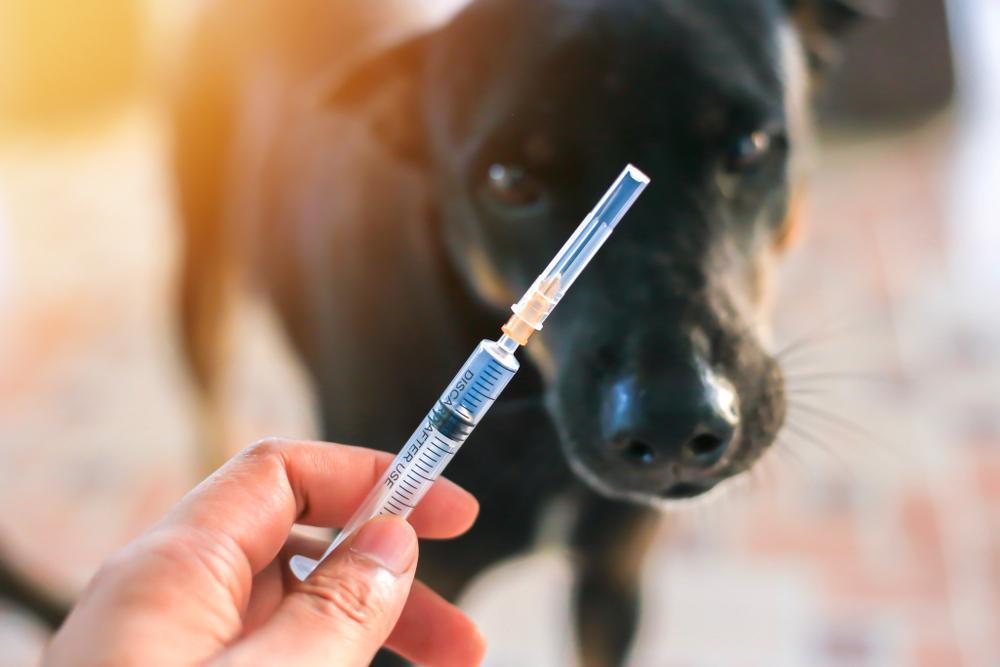
Disease ManagementGeneral Health
Vaccinosis: Damage Vaccinations Can Cause Your Pet
Nov 10 2020
•
13 min read

Disease ManagementGeneral Health
To Lepto or not Lepto? That is the Question
Nov 09 2020
•
9 min read

Disease ManagementGeneral Health
6 Nutritional Tips for Your Anxious Dog
Nov 02 2020
•
9 min read

Disease ManagementGeneral Health
5 Reasons Why Fibre is Your Dog’s Best Friend
Oct 28 2020
•
7 min read

Disease ManagementGeneral Health
Tear Stains: Is Your Dog A Cry Baby
Oct 27 2020
•
9 min read

Disease ManagementGeneral Health
How Traditional Chinese Medicine Can Help My Dog
Oct 21 2020
•
7 min read

Disease ManagementGeneral Health
Why Probiotics Are Good For You And Your Dog
Oct 20 2020
•
8 min read

Disease ManagementGeneral Health
Obesity and Musculoskeletal Health in Dogs
Oct 06 2020
•
6 min read

Disease ManagementGeneral Health
Dog Massage – What you Need to Know
Sep 24 2020
•
9 min read

Disease ManagementGeneral Health
How to Choose a Good Joint Supplement
Sep 17 2020
•
7 min read

Disease ManagementGeneral Health
When Should I Be Worried About My Dog Panting?
Aug 25 2020
•
9 min read

Disease ManagementGeneral Health
Why Dry Food is Not Good for your Pets
May 19 2020
•
5 min read

Disease ManagementGeneral Health
Natural Flea and Worming Treatments
May 05 2020
•
7 min read

Disease ManagementGeneral Health
Everything you Need to Know About Vaccinations
Apr 22 2020
•
7 min read

Disease ManagementGeneral Health
Magic Medicinal Mushrooms for Pets
Apr 02 2020
•
4 min read

Disease ManagementGeneral Health
The 4 Corner Stones for Healthy Anal Glands, Naturally
Mar 27 2020
•
10 min read

Disease ManagementGeneral Health
Essential Fats for my Dog’s Diet: The Ultimate Guide
Mar 24 2020
•
10 min read

Disease ManagementGeneral Health
7 Steps to Optimal Gut Health for Pets
Mar 13 2020
•
8 min read
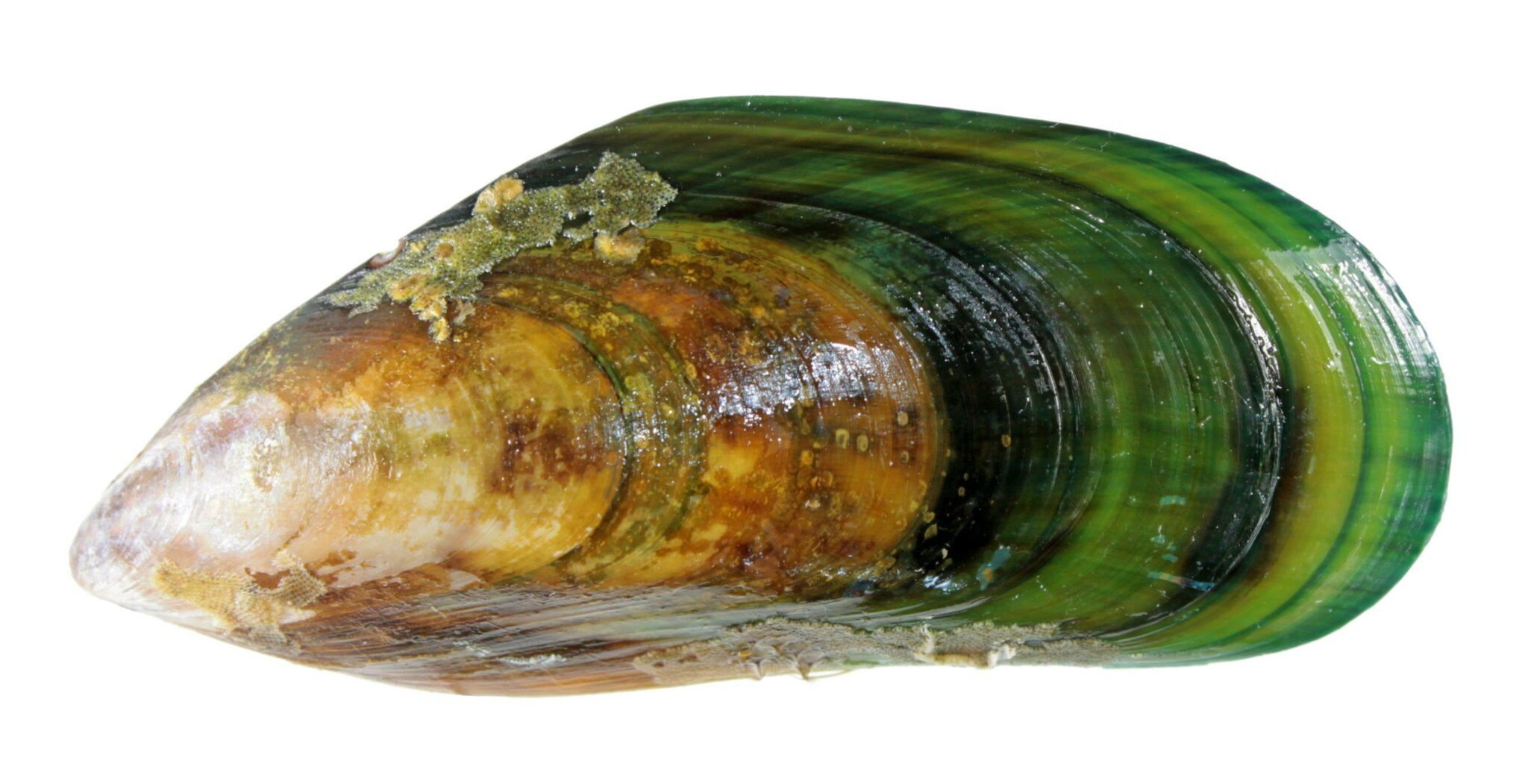
Disease ManagementGeneral Health
Groovy Green Lipped Mussels for Joints
Feb 28 2020
•
2 min read

Disease ManagementGeneral Health
7 Top Reasons to use Clay in your Dog’s Diet Regime
Feb 20 2020
•
5 min read

Disease ManagementGeneral Health
How to choose the right supplements for my pet!
Nov 15 2019
•
6 min read

Disease ManagementGeneral Health
Raw meat-based diets and The Royal Society Publishing
Oct 16 2019
•
6 min read

Disease ManagementGeneral Health
What is the best food to feed my cat or dog?
Oct 10 2019
•
5 min read

Disease ManagementGeneral Health
5 reasons why your dog eats grass
Feb 21 2019
•
2 min read
✕


















